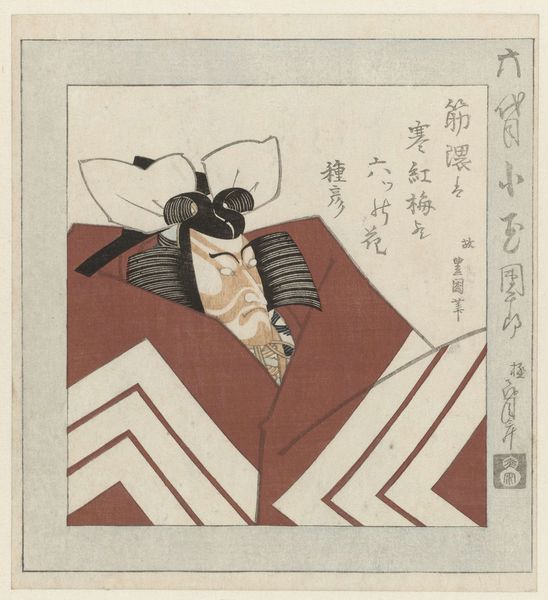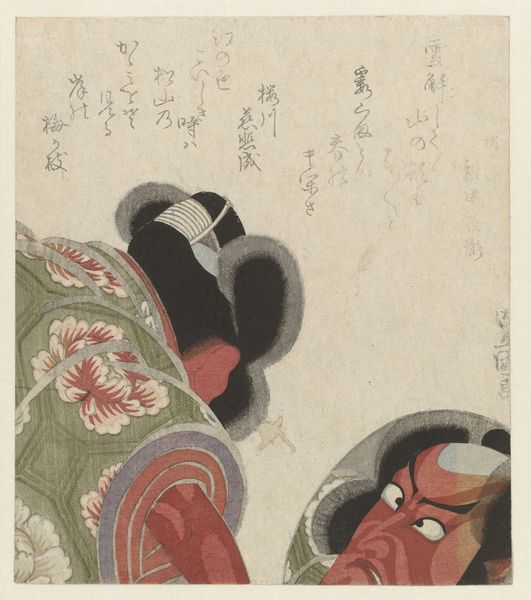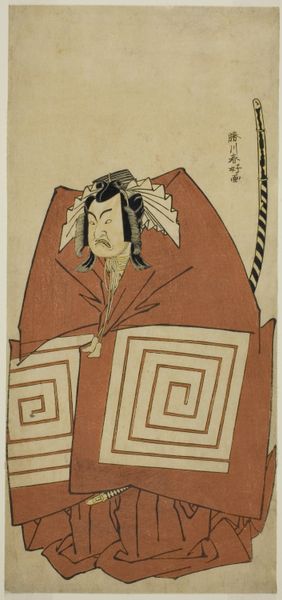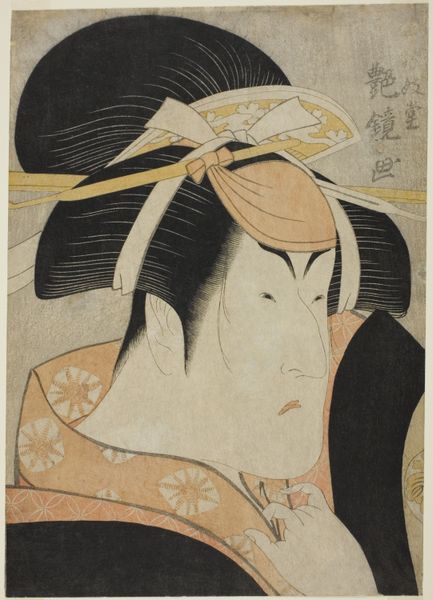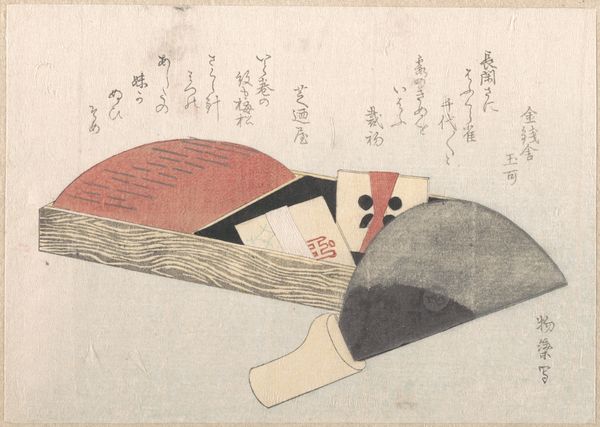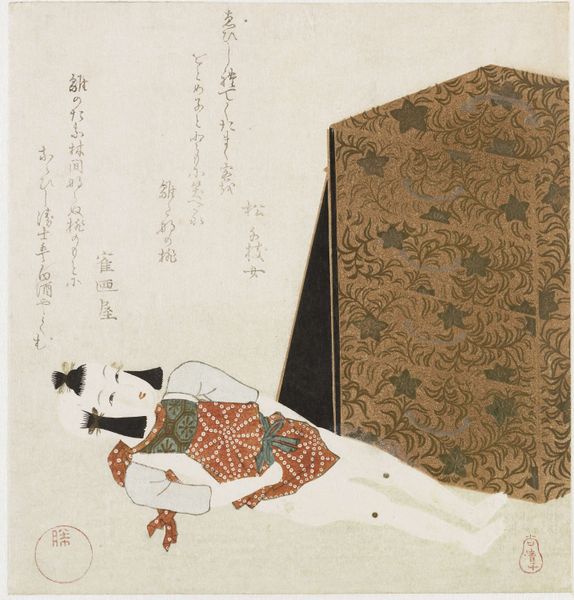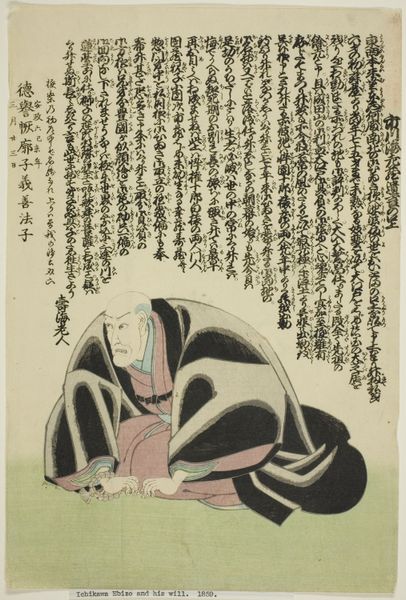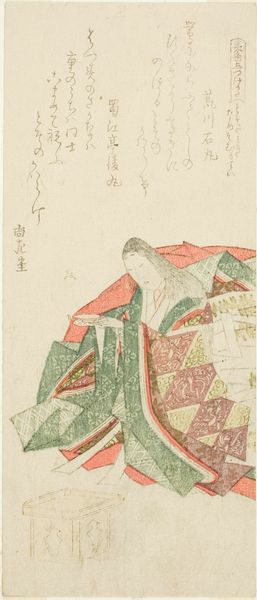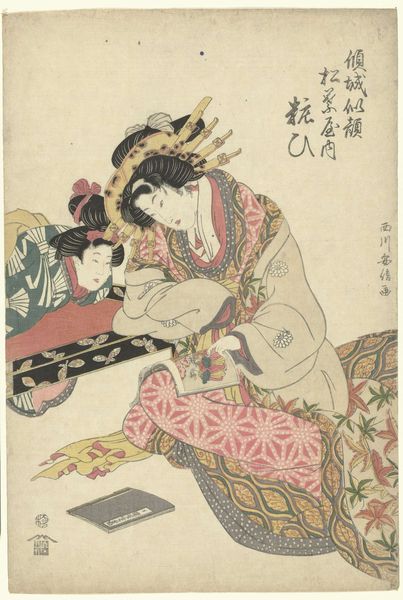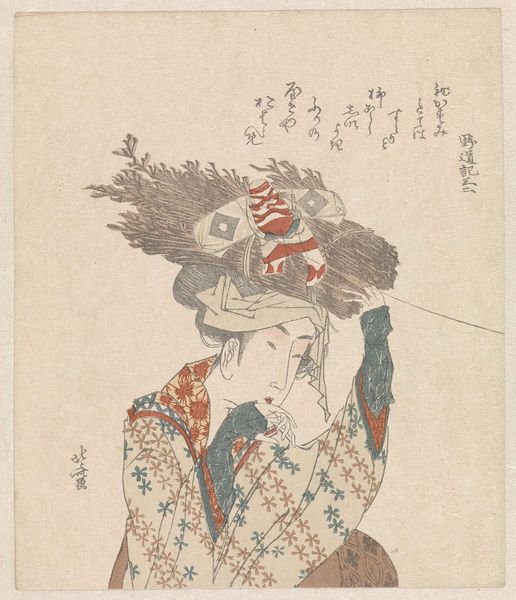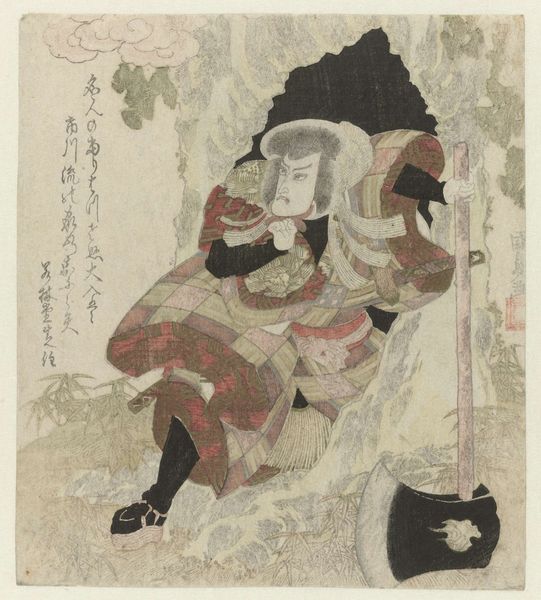
print, woodblock-print
#
portrait
# print
#
ukiyo-e
#
figuration
#
woodblock-print
Dimensions: height 193 mm, width 175 mm
Copyright: Rijks Museum: Open Domain
Editor: We're looking at Utagawa Toyokuni I's woodblock print "Ichikawa Danjūrō VII in the play Shibaraku," created in 1819. There’s such dramatic tension here, especially in the figure’s intense gaze. How do you interpret this work? Curator: The print embodies ukiyo-e’s fascinating relationship with theater and celebrity culture. But beyond that, consider how this specific portrayal of Ichikawa Danjūrō VII, a kabuki actor, intersects with ideas of power and resistance within Edo-period society. Kabuki itself, though popular, was often viewed with suspicion by the ruling elite. How might this defiant pose be read as a challenge to established authority? Editor: That's a perspective I hadn't considered. His expression definitely reads as defiant, and the oversized robes almost make him look like he's breaking free from some kind of frame. So you see this less as a simple portrait and more as a comment on societal restrictions? Curator: Precisely. The "Shibaraku" role he's portraying is iconic—a hero who intervenes to save the innocent. The oversized costume and exaggerated makeup, hallmarks of kabuki, are not just aesthetic choices, but also signal a disruption of everyday norms. The print, then, becomes a powerful assertion of the actor's, and by extension, the common people’s agency. What impact do you think the print's accessibility – as a widely circulated woodblock – had on amplifying this message? Editor: It’s amazing how much complexity lies beneath what I initially saw as just a striking image. Thinking about the historical context really opens up new ways of understanding the artist's message and intention. Curator: Indeed. Considering art through a lens of social and political power makes the image speak volumes, doesn't it?
Comments
No comments
Be the first to comment and join the conversation on the ultimate creative platform.
